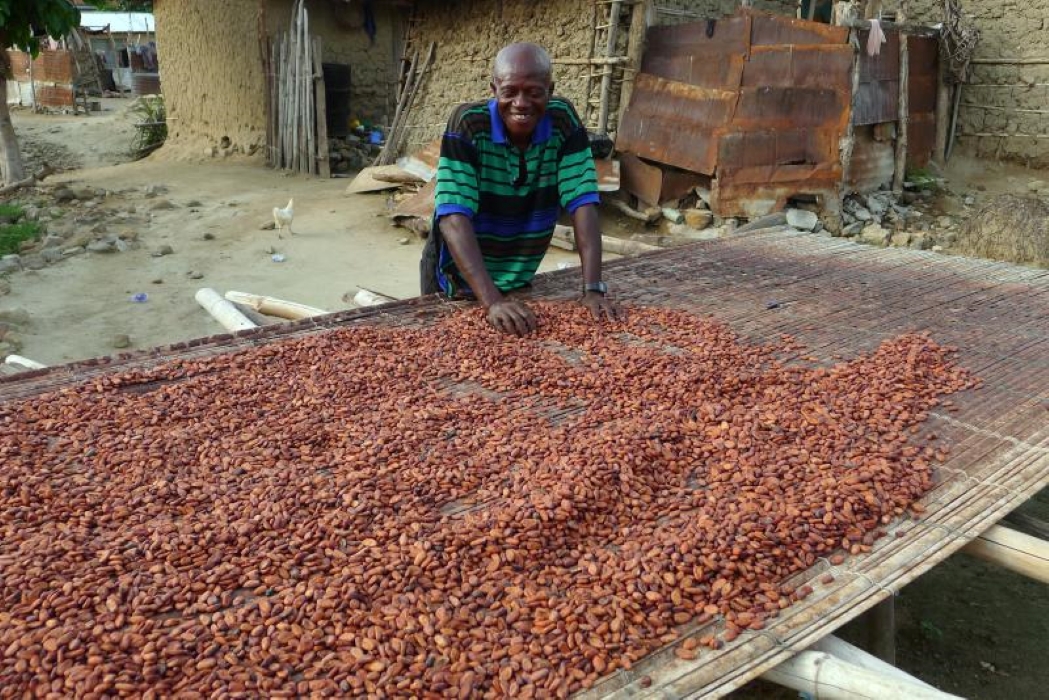Smallholder capacity for agricultural commercialisation

Please note: During this time of uncertainty caused by the #COVID19 pandemic, as for many at this time, some of our APRA work may well be affected in coming weeks but we aim to continue to post regular blogs and news updates on #agricultural #policy and #research.
Much of the agricultural economics literature has defined smallholder commercialisation as a virtuous cycle in which small-scale producers increasingly engage and integrate with markets, and as a result, raise their incomes and living standards. Yet, a significant proportion of these farmers face high risks that often result in rather short engagements with markets. Risks stem from the high costs of inputs and machinery, challenges of accessing output markets for sales and processing, and from price shocks or simply adjusting to new sales modalities. While some farmers can respond to these risks and continue to intensify and commercialise, others may respond by simply settling back into production for subsistence or even exit farming altogether. These differences point to the need for understanding the heterogeneity that characterises how smallholders respond to the risks from commercialisation.
In our forthcoming paper , we get to grips with the differences in smallholders’ ability to deal with risks from commercialisation. Using the basis that household incomes reveal the status of current living standards, and that their assets reflect both accumulated past wealth and security in the future – we hypothesise that the propensity of smallholders’ to commercialise depends on resource availability, reflected in income and assets. Household pathways of commercialisation will then be experienced differently depending on asset ownership and income poverty. In particular, we investigate whether the most resource constrained face significantly more challenges to commercialise than other households.
We capture these differences by identifying threshold asset levels (consisting of production equipment, consumer durables, land, and livestock as a bundle) required to
support the household above the income poverty line. Below this threshold, the poorest producers are unable to commercialise without facing higher risks, and above which better-off farmers are able to reap the benefits from high levels of commercialisation at low risk to their livelihoods.
The data for this study are from household surveys conducted in 2017-2018 by the DFID-funded Agricultural Policy Research in Africa (APRA) Programme of the Future Agricultures Consortium. Using cross-sectional data for 2,375 smallholder farm households (with total land area cultivated between 0 to 5 hectares) across Ghana, Tanzania, Nigeria and Zimbabwe, we examine the concept of smallholder capacity for commercialisation in different contexts. Data were collected through face-to-face interviews carried out by a team of enumerators who were trained and supervised by the researchers. Use of a core set of questions in all four countries gives us relevant and comparable data on highly commercialised smallholder households from four different contexts (Chirwa, Sabates-Wheeler, and Saha 2018[as3] ).
The Ghanaian smallholder sample grows oil palm as a primary crop, such that households sell a substantial proportion of their production, while sample households in Tanzania grow rice as a main crop and, expectedly, also use rice for purposes of home consumption, gifts, payments, and other uses than immediate sales in the market. Our Nigerian smallholder sample, with linkages to medium-scale farmers, are growing and selling large proportions of maize as their primary crop. Finally, in Zimbabwe, smallholders grow tobacco and maize; both crops fetching commercial value in the markets.
We find that there are certain characteristics that differentiate higher-capacity households across all four countries, but there are also different factors affecting capacity across countries, likely owing to the differential nature of opportunities for commercialisation. We highlight four key findings below.
First, in all four countries, more educated and younger smallholder farmers with better access to roads, on average, have higher capacity for commercialising, are hiring more labour, and selling higher proportions of their produce. What is also clear is that capacity for commercialisation is a context-specific story, where ‘capacity’ is also linked to the main crops, namely oil palm, rice, maize or tobacco, grown by those farmers as well as location.
Second, higher-capacity households are predominantly male-headed on average, suggesting gender differences in terms of capacity. However, we find an exception to this in Ghana and Nigeria, where the gender of household head is not a statistically significant factor differentiating capacity.
Third, market access and access to tarmac roads have a differentiated story across the four APRA study countries. In Nigeria, road and market access is highly significant in explaining capacity, highlighting the linkages with medium-scale farmers that is a key characteristics of our sample. Road access makes a significant difference in explaining capacity also in Ghana, where oil palm as a key crop is dependent on transport linkages.
Finally, we find that the likelihood of being highly commercialised increases with household size and hired labour in all countries. For household size, we note a U-shaped relation such that the likelihood of high commercialisation appears to increase only for a certain size of the household in Ghana, Nigeria and Zimbabwe. One clear exception for hired labour is Ghana, where we find an inverted U-relationship such that beyond a certain number of labour days on average, the likelihood of being highly commercialised declines.
In summary, smallholder capacity, which is essentially a proxy for poverty, determines the ability to commercialise. Capacity is therefore a constraint to moving onto a commercialisation pathway and the obvious policy implications are that households with low assets and income are likely to need a significant boost to help them commercialise. This could be in the form of credit, targeted assets and training – depending on the crop and sector in which the commercialisation is happening. Also, given the role for demographic factors, targeted interventions to support farmers wishing to increase marketed output can be tailored to household types.
Written by Amrita Saha, Rachel-Sabates Wheeler and John Thompson
Photo: Harvesting cocoa at Lake Bosumtwi, Ghana. Credit: Carsten ten Brink on Flickr.
